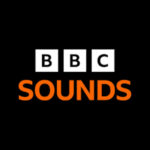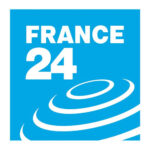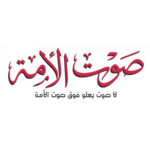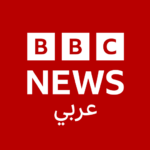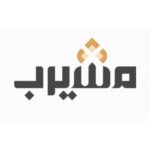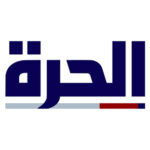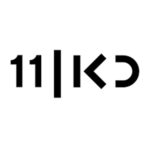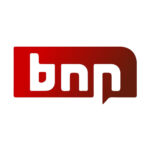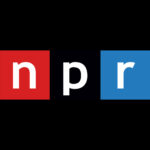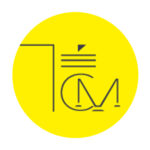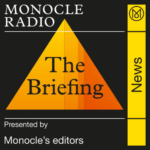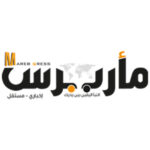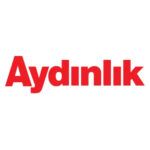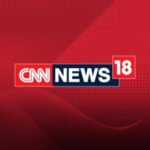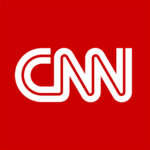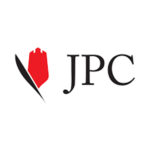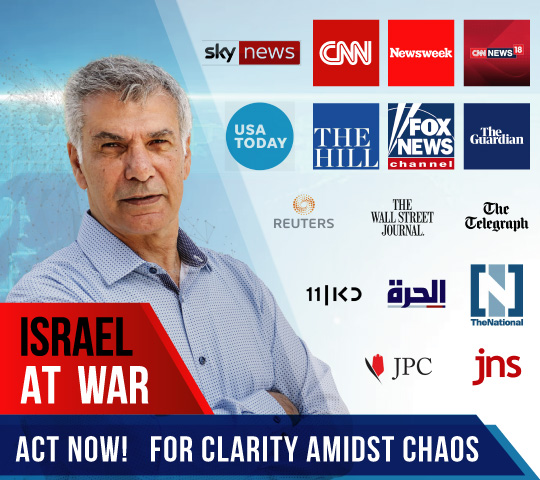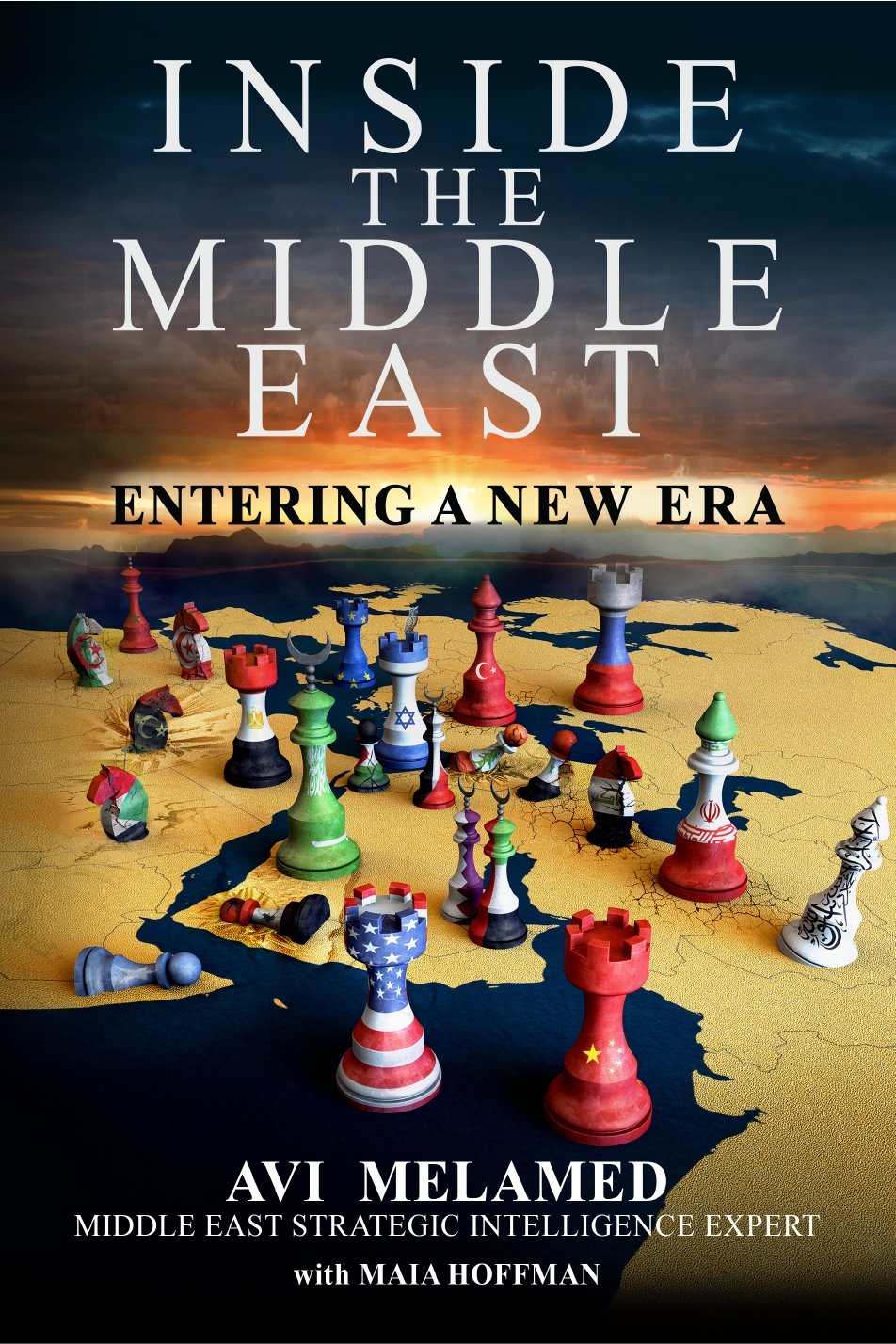|
Getting your Trinity Audio player ready...
|
Al-Quds: Iranian Poster & Hidden Messages
Hezbollah chief
Every year, on the last Friday of the Muslim month of Ramadan, worshipers around the world mark “Al-Quds Day.” This year. Ramadan began on April 23rd and ended on May 23rd. Al Quds Day this year was on May 22nd.
Al-Quds is the name in Arabic for Jerusalem. The word is taken from the Hebrew word for holy which is kadosh. Al-Quds and means “The Holy.” On Al-Quds Day there are rallies, demonstrations, and programs in which Muslims express their commitment to liberate Al-Quds from Israeli rule.
As part of the recent “Al-Quds Day”, the Iranian regime published posters highlighting the narrative of “Liberating Al-Quds and Al-Aqsa.” Even though this poster was published a few weeks ago, I wanted to share my analysis with you and hope you will find it interesting as it provides an interesting insight into current regional dynamics.
I wanted to take the opportunity to share one poster with you. As we analyze this specific poster, we will uncover a fascinating mosaic of covert Iranian messages. Before examining these messages, who they are targeting, and what their background is – here is a brief framing.
The Temple Mount Compound – in Hebrew, Har Ha-Bayit is located in the Old City of Jerusalem. Har Ha-Bayit and the City of David which lies just south of the Old City are at the core of the religious, cultural, and political history of the Jewish people. The two Jewish temples stood on Har Ha Bayit. The First Temple was built by King Solomon in the second half of the 10th century BCE and was destroyed in 586 BCE. The Second Temple was built in 516 BCE and stood for 586 years until it was destroyed by the Romans in 70 AD. The only element that remains of either temple, is the Western Wall, known in Hebrew as Ha-Kotel (meaning “The wall”). The Western Wall is part of the perimeter wall that surrounded the original Temple compound. When Jews pray, they face Jerusalem.
Mecca and Al-Medina in the Arabian Peninsula are the holiest places for Islam. Al-Quds is the third holiest place for Sunni Muslims (over eighty percent of Muslims are Sunni). Although in Islam, the sacredness of Al-Quds is not comparable to that of Mecca and Al-Medina, Islam describes Al-Quds as “the first to direct prayer and the third to religious sanctity.” Here is a brief explanation of the phrase “First Direction of Prayer.” During the first year of Islam, the first direction Muslims prayed towards was Jerusalem because Prophet Muhammad – the founder of Islam, wanted to win the support of the Jewish tribes of the Arabian Peninsula. But the Jews rejected Muhammad’s offer. When Muslims pray, they face Mecca.
The Temple Mount Compound in Arabic is called Al-Haram al-Sharif (The Noble Sacred Compound). In the complex are two important symbols of Islam that were built during the Islamic conquests of the late 7th and early 8th centuries AD. One is the Dome of the Rock and the other is the Al-Aqsa Mosque. The word “Al-Aqsa” means “The Far Edge.” The term “Al-Aqsa” appears in the first verse of Chapter 17 of the Qur’an (the Islamic Bible). Chapter 17 describes Muhammad’s miraculous night journey to a place called “al-Aqsa.” For a long time, Islamist theologians identified “al-Aqsa” with heaven. Popular traditions, as well as political circumstances, caused Islamist theologians to change their outlook, and since the late Middle Ages, the term “Al-Aqsa” in Islam means Jerusalem.
Until 1967, Al-Haram al-Sharif / the Temple Mt. Compound / Har ha-Bayit was under Jordanian rule. Following the 1967 war, Israel occupied (in Arab-Muslim terminology) or liberated (in Jewish-Israeli Zionist terminology) the Compound.
In the Muslim world in general and the Arab world in particular, the “Liberation of al-Aqsa” is a compelling and powerful concept. For example, during the recently concluded month of Ramadan, an Egyptian TV series entitled “The End” captured the screens. The apocalyptic, sci-fi series describes the liberation of Al-Aqsa and the “expulsion” of the Jews from the world. The anti-Jewish sentiments led to formal Israeli diplomatic protests. It also evoked criticism among Arab viewers themselves. In response, the series producer said that the series expresses the “authentic dream of every Muslim to liberate Al-Quds.” (Here is a link to the series’ promo – https://youtu.be/1pSB8BPMIJ0).
Indeed, from a myriad of perspectives – emotionally, culturally, politically, religiously, “Liberating Al-Aqsa “is an authentic narrative that appeals to the emotions of Muslims around the world. It is also a useful propaganda narrative and is often used by Muslim rulers and governments to distract people from internal economic and social challenges. And regimes such as Iran and Turkey rally the masses to “Liberate Al-Aqsa” to advance their geopolitical goals.
The Iranian regime is Shi’ite. Turkey is Sunni. Though both are Muslims, they harbor mutual and eternal animosity. Here is the background: The Prophet Muhammad (570 – 632) founded Islam in the early 7th century. When Muhammad died, he was succeeded by rulers known as Caliphs. The term Caliph is part of a longer title in Arabic – Khalifat Rasul Allah meaning “the replacer of Allah’s messenger” i.e. the replacer of Muhammad – men who were either nominated by their predecessor or elected by a religious council to lead the Muslim world.
The fourth Caliph was a cousin and son-in-law of Muhammad. His name was ‘Ali Bin Abi Talib. He was Caliph from 656 – 661. ‘Ali Bin Abi Talib was assassinated in 661. His death boosted a power struggle over the throne. ‘Ali Bin Abi Talib had nine wives. From those wives, he had a total of twenty-one children. His first wife was Muhammad’s daughter, Fatima. Together they had four children- two boys and two girls. ‘Ali and Fatima’s oldest son’s name was Hassan. When ‘Ali Bin Abi Talib died, Hassan succeeded his father as the Caliph. After a while, Hassan stepped down.
When Hassan abdicated the throne, his brother, Hussein Bin ‘Ali Bin Abi Talib, said, ‘my grandfather was Prophet Muhammad, my father was the Caliph, my brother was the Caliph, so I am the next one in line.’ His opponents disagreed. They argued that leading Islam was not about bloodline. It is about the most suitable person for the position.
The power struggle escalated. In 680 Hussein – who was Muhammad’s only grandson through a direct bloodline, was slaughtered in a battle along with his followers. The battle took place in Karbala – which is Iraq of our times. This is when Islam split. The Sunnis believe the ruler of the Muslim world should be the most suitable person for the position. The Shi’ites believe the leader of the Muslim world should be a direct male descendant of the fourth Caliph, ‘Ali Bin Abi Talib. And therefore, Shi’ites argue that when Hussein was killed the crown of leadership was stolen from them. The rivalry between the bloodline camp (the Shi’ites) and the merit camp (the Sunnis) has led to an unbridgeable gap and an irreconcilable hatred and animosity between the two camps.
But the current regime in Iran and the Turkish President Erdogan do have a common denominator. Hegemony. They both want to be the regional superpower. Both Iran and Erdogan claiming they want to “Liberate Palestine and Al-Aqsa “is a good way to gain public support.
The current regime in Iran came to power in 1979. A series of events known as the Islamic Revolution overthrew the Shah of Iran and Iran became an Islamic Theocracy ruled by Mullahs (Shi’ite clerics). The official name of Iran is the Islamic Republic of Iran. One of the first things the regime did was to establish an entity called The Iranian Revolutionary Guards Corps (IRG or IRGC). The IRG is under the command of Iran’s Supreme Leader, who, since 1989, is Ali Khamenei. The IRG’s mission is to defend the Islamic Republic against internal and external threats. The IRG has evolved into the most powerful entity in Iran – economically, militarily, and politically.
There is an elite unit of the IRG (logo to the right) named the “Al-Quds Force.” Their motto is the “Liberation of Palestine and Al-Aqsa.” Since the 1980’s – through its Al-Quds force – Iran has established and/or fostered a network of regional agents and proxies. These subcontractors operate in a framework known as the Axis of Resistance – in Arabic miḥwar al-muqāwamah.
The Axis of Resistance vows to eliminate Israel through violence. The Axis includes factors such as Hezbollah in Lebanon; Hamas and Islamic jihad in Palestine (IJIP) in the Gaza Strip; an array of Iraqi Shi’ite militias; Shi’ite Afghan and Pakistani militias operating in Syria; a coalition of Shi’ite tribes in Yemen known as the Houthis; and a host of other groups and organizations in the Arab (Persian) Gulf, Africa, etc.
The modus operandi of the axis of resistance is effective and simple. Iran either creates an organization (like Hezbollah in Lebanon) or becomes the patron of an existing organization (like Hamas, Islamic Jihad, the Houthis, etc). Iran funds, arms, provides the military training and domestic and foreign policy guidelines they are to follow and execute. Each group has an independent political, military, and economic system in the states in which they operate. Therefore, each of Iran’s agents and proxies are independent entities that operate in parallel to the local institutions and agencies in their respective countries. Therefore, they create a “state within a state” – a state that is controlled to one degree or another by Iran. This is one of the mechanisms the Iranian mullah regime has developed to spread its control throughout the region. In countries like Iraq, Lebanon, and Syria Iran’s proxies wield great influence over the economy and politics. To the point that Iran is the one dictating or at least influence the domestic and foreign policy of those countries.
Now that we have the framing, let’s take a close look at the Iranian poster.
***
On one level, the poster faithfully represents the Iranian regime’s use of the “Liberation of Al-Aqsa” narrative. On another level, the regime us using this poster to send a message. The people that are included, their position in the poster, and no less important – those who are excluded – reflect hidden Iranian messages.
What are these messages and to whom are they intended?
First, let us get acquainted with some of the figures that appear in the poster (the numerical order is arbitrary).
- # 1 Hassan Nasrallah. The leader of the Lebanese Shi’ite Hezbollah. An organization created by Iran in Lebanon in the 1980s. Hezbollah is Iran’s most important and powerful proxy.
- # 2 Ismail Haniyeh. The leader of the Palestinian Sunni Islamist movement Hamas. Hamas has governed Gaza since 2007 and is the most powerful militant organization in Gaza.
- # 3 A Sunni Cleric. The figure resembles Ahmad Badreddin Hassoun. The Grand Mufti of Syria. The Grand Mufti is the highest clerical position in Sunni Islam.
- # 4 Ziad Al-Nakhala. The leader of the Islamic Jihad in Palestine (IJIP). IJIP is Sunni and is the second-largest Palestinian military power in the Gaza Strip.
- #5 Issa Ahmad Qassem. The Ayatollah ‘Uzma – the Grand Ayatollah and the leader of the major Shi’ite political party in Bahrain. The Grand Ayatollah is the highest rank in the Shi’ite religious order. Few Shi’ite religious scholars hold this rank. (By the way – most of the people in Bahrain are Shi’ite Arabs, but Bahrain is ruled by a Sunni minority).
- # 6 Bashar al-Assad. The president of Syria.
- # 7 Major General Ismail Qaani. The commander of the Al-Quds force, of the Iranian Revolutionary Guards. Qaani replaced Major General Qassem Soleimani, who was eliminated by the United States in January 2020.
- #8 Abdel-Malek al-Houthi. The leader of the coalition of Houthi Shi’ite tribes in Yemen.
- #9 I believe (though I am not 100 % certain) that this is Falih al-Fayyadh, Iraq’s National Security Advisor and the leader of the Popular Mobilization Units (PMU – Al-Hashd Al-Shabi) an Iraqi military force that works in parallel to the Iraqi army.
- #10 Major General Qassem Soleimani. The leader of the Al Quds Force. He was killed in January 2020 in Iraq by the US.
- #11 Ibrahim El Zakzaky. A Shi’ite Islamic leader in Nigeria and head of Nigeria’s Islamic movement. He has been incarcerated since December 2015 due to initiating acts of violence against the government.
All these figures are part of the Iranian- backed axis of resistance.
***
What are the hidden Iranian messages, to who are they addressed, and what is the background?
First message: The Members of the Axis of Resistance In the front row of the picture is Hassan Nasrallah, the head of Hezbollah, a Shi’ite militant organization Iran created in Lebanon in the 1980s. Since then Hezbollah has become Iran’s most important and powerful proxy. Next to Hassan Nasrallah, is the leader of Hamas, Ismail Haniyeh. Hamas is a Palestinian Sunni militant movement that was founded in Gaza in 1987. Hamas rules Gaza since 2007. On one level, Nasrallah and Haniyeh’s placement emphasizes their centrality, prominence, and importance in the Iranian-backed axis of resistance.
However, there is another level. In the second row above Haniyeh’s right shoulder – in between Haniyeh and Nasrallah – is Ziad al-Nakhlah, the leader of the Islamic Jihad in Palestine (IJIP).
The relationship between Iran and Hamas is more complicated than the relationship between Iran and IJIP. Hamas and IJIP are both Sunni Islamic organizations. The war in Syria put a wedge between Hamas and Iran. The Arab world put a lot of pressure on Hamas to distance itself from Assad because Iran and its proxies – most notably Hamas’ “mentor” or “older brother” – Hezbollah were killing Sunnis in Syria – including Palestinians. It is estimated that over 4,000 Palestinians have been killed in the war in Syria. In 2012 Hamas acquiesced. They closed their offices in Damascus and distanced themselves from Iran. Iran retaliated for Hamas’ treason by cutting its financial support for civil projects in Gaza. However, Iran continued to fund Hamas’ military force – the Izz ad-Din al-Qassam Brigades.
Over the past two years, Iran and Hamas have reconciled. It is worthwhile noting, that Syrian President Assad is in no hurry to rush and forgive Hamas for its betrayal. Arab sources report that Hamas members who did not get out in time, are still in Assad’s prisons.
On January 3, 2020, the United States killed the commander of the Al-Quds Force, Major-General Qasem Soleimani. Ismail Haniyeh, the leader of Hamas, and Ziad al-Nakhla, the leader of IJIP traveled to Iran and attended Soleimani’s funeral. Haniyeh gave a eulogy. Hamas even erected a mourning tent in the Gaza Strip.
Parallel to Hamas’ public display of mourning – Palestinians in Gaza and the West Bank – and Arabs all over the region were distributing sweet desserts and candies on the streets. Throughout the Arab world, people were celebrating the death of Major General Soleimani – the man who was responsible for the death of hundreds of thousands of Arabs, including Palestinians. Hamas’ display of mourning Soleimani’s death caused anger on the Palestinian street.
The discontent seeped into Hamas itself. In the backrooms of the movement, there was severe criticism of Haniyeh’s condolences.
The mullah regime knows that its interests and Hamas’ interests do not always overlap. Hamas, who governs the Gaza Strip since 2007 cannot follow Iran blindly. As the government in Gaza, Hamas has other domestic and foreign policy calculations they need to consider. And though Hamas enjoys generous Iranian support – they do not necessarily give priority to Iranian interests – as shown in the case of the war in Syria. Given that reality, Iran does not keep all its eggs in the Gaza Strip in one basket. And this is where the Palestinian Islamic Jihad (IJIP) comes into the picture.
IJIP – Islamic Jihad in Palestine is the second most powerful military force in Gaza. IJIP doesn’t need to deal with the day to day functions of the Gaza Strip and it does not need to be concerned with the daily lives of Gazans or the ramifications of its actions on the lives of the people in Gaza. IJIP is committed to one goal and one goal only. Incessant violence against Israel until it is destroyed. For Iran, IJIP is a more reliable proxy-partner than Hamas. And so, Iran generously supports the IJIP. And the IJIP gives Iran a good return on its investment.
Hamas and IJIP have traditionally coordinated violence against Israel. However, throughout 2019, IJIP independently launched attacks on Israel and did not confer with Hamas beforehand. Hamas is disturbed with IJIP’s growing independence. IJIP independently initiating rounds of violence with Israel bothers Hamas because it could drag Hamas into a wide military collision with Israel at any moment. Hamas wants to be able to launch attacks on Israel when it is convenient and advantageous to them. Not when IJIP decides. IJIP’s independent militant policy is a source of tension between the two organizations.
Now that we understand that dynamic, let’s get back to the poster.
First, I want to draw your attention to #10. Major General Qassem Soleimani who was the leader of the Al Quds Force and was eliminated by the United States in January 2020. Soleimani’s image in the poster in the shape of a cloud has a dual symbolism. First, it is an Iranian message to the Muslim world in general and the Arab world in particular that Iran is the one leading the struggle for the Liberation of Al-Aqsa. And second, it is a hint that if you die in the service of liberating Al-Quds you will be rewarded in the heavens.
Putting Ismail Haniyeh (Hamas) in the front row, next to Hassan Nasrallah (Hezbollah) signal’s Hamas’ seniority in the Axis of Resistance. However, Nakhala’s position behind Haniyeh is an Iranian concealed message reminding Haniyeh that “we (Iran) have another agent in Gaza (IJIP / Al-Nakhala) who can dictate events on the ground. Your (Haniyeh and Hamas) seniority could be changed.”
Second message: The War in Syria. Before I begin talking about the second message, it is important to explain one thing. Iran and Bashar Al-Assad – the President of Syria, have marketed the war in Syria as a battle for Jerusalem. In July 2015, in a televised speech, Hezbollah Secretary-General, Hassan Nasrallah, said ” the road to Jerusalem goes through “Qalamoun, Zabadani, Homs, Aleppo, Daraa, Hasakeh and Suweida in Syria.”
Now that we have that context, we can go on to the second message in the poster. And that has to do with the war in Syria.
Notice where Syrian President Bashar Al- Assad is located. He is not in the front of the picture but in the back, small and fuzzy. That’s interesting. Iran and Assad are allies in the war in Syria. Iran and Assad work together to suppress the rebellion in Syria to keep Assad in power. Assad legitimizes Iran’s presence in Syria by saying that Iran is helping the Assad regime fight terror. Assad has helped Iran take over Syria. Iran needs to expand its control in Syria to achieve one of its most important strategic objectives- becoming the regional superpower. Why, then, is Assad not at the forefront of the picture in a size that would reflect his apparent central status?
First, in looking at the poster, we must remember that this poster is intended to market Iran to the Arab world. The Iranian regime knows Assad is a leper in the Arab world because of the devastation that he, Russia, and the Iranian-backed militias have inflicted upon Syria. Nearly 700,000 people are dead; the war has created six million refugees; nine million Syrians have been displaced; employment is near ninety-percent percent; cities and towns have been turned to dust. Syria and the Syrians have been destroyed in a war that began as a domestic struggle to oust Syrian Dictator, Bashar Al-Assad. But evolved into an all-out Sunni-Shi’ite Arab-Persian-Turkish-Russian war of epic historical proportions. Therefore, given the destruction and devastation, Assad has wrought, it is clear to the Iranian regime that if it places Assad in the foreground as the ” Liberator of Al-Quds” it will boomerang on Iran’s marketing campaign. Therefore, it is better to reduce Assad’s presence and prominence.
A second reason for Assad’s minimal stature is that Iran has spent tens of billions of dollars to save the Assad regime. Accordingly, Iran expects a return on its investment. It is estimated that it will cost about half a trillion dollars to rebuild Syria. And Iran wants to take part in it by securing bids for reconstruction, etc. But Iran is not the only player in Syria who wants a piece of the pie. Russia is there. Putin’s air force has kept Assad in power and has secured Iran’s presence in Syria. And Putin does not give free meals. He expects to be handsomely rewarded for his efforts and accomplishments. In addition to the air and naval bases he has secured for himself in Syria, Putin wants access to Syrian oil, and he also wants the revenues from rebuilding Syria. And he does not want to share the spoils of war with Iran. Recent reports claim that Russia has been putting pressure on Assad to end or significantly limit Iran’s presence in Syria. The Iranian message to Assad in the poster is an implied threat. ” If you throw the Iranian regime under the wheels of the Russian bus, you can be minimized. You can even disappear.”
Finally, while Assad is way in the back – almost unnoticeable. Let’s focus om the first row. Figure #3 is a Sunni cleric who bears a strong resemblance to the Grand Mufti of Syria, – Ahmad Badreddin Hassoun. Including a senior Sunni cleric (possibly Syria’s Grand Mufti) – and moreover – putting him in the first row as a Shi’ite cleric (figure #5) is a tactic to gain the support of the Sunni Arab world. But more than a marketing pitch – it is a message indicating that they are in this together and that they see the Sunnis as equals in the fight to defend and conquer Jerusalem. The fact that they have included someone who looks so much like Syria’s top Sunni cleric who supports Assad’s rule as he destroys Syria, is an Iranian attempt to placate the Sunnis and to appeal to their goodwill to forgive Iran for the destruction it has brought to Syria (and other parts of the Arab world).
Third message: Iraq. I would now like to turn your attention to figure #9. The features are very partial, but I think it is Falih al-Fayyadh, Iraq’s National Security Advisor, and the Chief Commander of the Iraqi Popular Mobilization Units (PMU – in Arabic Al-Hashd al-Sha’abi.
The PMU began as various independent Iraqi Shi’ite militias that banded together to rid Iraq of ISIS. In July 2016, the force was incorporated into Iraq’s armed forces – but as an independent military force. In November 2016, the Iraqi Parliament passed a law creating a new entity – an additional official Iraqi military force funded and armed by the Iraqi government. They called this new military force Al-Hashd al-Shaabi (the Popular Mobilization Units – the PMU).
This new independent military force that functioned in parallel, but separate, from the Iraqi armed forces – and was funded and armed by the Iraqi government, spearhead the war against ISIS in Iraq. What’s interesting is that the Iranian Revolutionary Guards (IRG) trained and commanded the PMU in their war against ISIS in Iraq.
Practically speaking, what this meant was, that although the PMU was an official Iraqi military, financed and armed by Iraq, the major PMU Shi’ite militias found themselves under the command of the IRG. Today the PMU is made up of some seventy – mostly Shi’ite-Iraqi militias. The largest and most powerful PMU militias are Iranian proxies.
Assuming #9 is Falih al-Fayyadh, why is he in the poster, and since the PMU is such a significant force – why is he portrayed so vaguely?
First, he is included the poster because as I said above, the major Shi’ite Iraqi militias of the PMU are Iranian proxies. And therefore, the leaders of those militias call for the “liberation of al-Aqsa” and vow to eliminate Israel. Iran, therefore, must pay tribute to them as dutiful servants of the cause.
OK, but then we would think Al-Fayyadh would be much more prominent. Doesn’t he belong in the first row with the other central Axis members? Well, nothing in the Middle East is simple…
Though al-Fayyadh has a good relationship with Iran, the Iranians doubt to what extent they can really rely on him as an ally. Why? Al-Fayyadh’s Deputy Commander of the PMU was Abu Mahdi al-Muhandis. Muhandis was eliminated together with the Al-Quds Force Commander, Major General Qasem Solemiani on January 3, 2020, by the United States.
Al-Muhandis was very close to the IRGC – and this caused growing tensions between him and al-Fayyadh. In September 2019, Al-Fayyadh met United States government senior officials in the States. Around that time, according to reports, he fired his Deputy al-Muhandis.
Note that Al-Fayyadh is positioned next to Assad. This is not a coincidence. Like in the case of Assad. The Iranian message to Al-Fayyadh is “you – like Assad, are replaceable”.
Fourth Message: A Concealed Insult to Sunni Islam The Dome of the Rock appears in the poster because it is the symbol most identified with the Al-Haram al-Sharif Compound and Al-Aqsa (Jerusalem). Interestingly enough, the Dome of the Rock was not built as a mosque. In fact, in the Arab-Palestinian folklore, the Dome of the Rock is called “the Mosque of Women” because women pray there on Friday, which is the main day for Muslim worship.
You will notice that the men are all praying with their backs to the Dome of the Rock. While Jews pray in the direction of Jerusalem, Muslims pray in the direction of Mecca in the Arabian Peninsula which is south of the Dome of the Rock. Therefore, from the Iranian perspective – as a marketing tool – having the figures with their back to the Dome of the Rock is natural. So far, so good.
However, the praying position of the figures in the poster is an implicit Iranian message meant to taunt Sunni Islam.
Let me explain… The Al-Haram Al-Sharif complex contains two Islamic symbols. The Al-Aqsa Mosque and the Dome of the Rock. Neither actually has any special significance in Shi’ite Islam. Moreover, while Al-Quds is the third holiest place for Sunni Muslims, the third most sacred place for Shi’ite Islam is not Al-Quds. It is Najaf in southern Iraq. Najaf is where the fourth Caliph and the founder of Shi’ite Islam – Ali Bin-Abi Taleb, is buried.
Therefore, the figures standing with the Dome of the Rock to their back sends a message that the Dome of the Rock – the third holiest site for Sunni Islam – holds no importance for Shi’ite Islam.
Fifth Message: Who does not appear in the poster?
The most startling figure not to appear is King Abdullah II of Jordan. Until 1967, the Al-Haram Al-Sharif complex was controlled by Jordan. In fact, one of the official titles of the King of Jordan is ” the Servant of Al-Quds.” Article 9 of the 1994 Peace Agreement between Israel and Jordan recognizes Jordan as the legitimate representative of Muslim interests in future negotiations with Israel regarding the final status of Islam’s holy sites in Jerusalem. The absence of the Jordanian King from the poster is an Iranian message delegitimizing Jordan. The mullah regime has not forgotten that as early as 2004, King Abdullah II warned the world about Iran’s hegemonic vision. He cautioned about Iran’s goal of creating “The Shi’ite Crescent” from Beirut to the Persian Gulf. And when it comes to the war in Syria, Iran suspects that attacks on its proxies in Syria launched from Jordan.
The other person missing is Palestinian President Mahmoud Abbas (Abu Mazen). This again is Iran’s way of delegitimizing Abbas who is a bitter opponent of Hamas and IJIP. Abbas criticizes Hamas and IJIP for sacrificing the people of Gaza on the altar of Iran under the banner of the “armed resistance” for the sake of furthering Iranian interests. In addition, Abbas openly stands shoulder to shoulder with the Gulf States against Iran.
The leaders of the major Arab states – Egypt and Saudi Arabia as well as the other Arab leaders – are absent from the poster. This is a clear Iranian message that the Arab world has betrayed its commitment to liberate Al-Quds and to liberate Palestine, while Iran remains committed and willing to sacrifice for this purpose.
Getting back to Turkey – President Recep Tayyip Erdogan, an important Sunni Muslim leader in the Middle East who aspires to position himself as the leader of the Sunni Muslim camp in the Middle East – is also absent. Erdogan – like Iran tries to leverage the slogan of “Liberating Al-Quds and Palestine” to advance himself and his own hegemonic aspirations. When it comes to the Sunni world – Erdogan has an advantage over Iran because the Palestinians – like most Muslims (both Arabs and non-Arabs) – are Sunni, not Shi’ite. As we said, according to the Shi’ite narrative, the crown of leadership of the Muslim world was stolen from them in 680 by the Sunnis. Portraying Iran as the front-line defender of Al-Quds proves that the Shi’ites – not the Sunnis – are the leaders of the Muslim world. Therefore, Iran has no intention of giving Erdogan a foothold in the picture – quite literally.
And a Closing Remark
This poster has made significant waves on social media networks in the Arab world. I read hundreds of responses. The mockery, sarcasm, anger, and hatred directed at Iran and its envoys – Nasrallah, Haniyeh, Al-Nakhla, Assad, Soleimani, etc. – is undeniable. These reactions don’t surprise me – and should not surprise my readers. Those of you who follow me know that I have continued to highlight the evolving and widening disillusionment and growing anger in the Arab world towards the sophisticated and cynical Iranian regime that has taken over parts of the Arab world while blinding the Arab masses with the slogans of “Al-Muqawamah – the resistance” and the slogan of “Liberating Palestine and Al-Aqsa.”
Al-Quds: Iranian Poster | What are the hidden Iranian messages, to who are they addressed, and what is the background? by Avi Melamed
If you want to have a better understanding of the news and what really drives the unfolding events…
Read the latest book of Avi Melamed,
INSIDE THE MIDDLE EAST | ENTERING A NEW ERA, available now >>>
Follow me on Twitter @AviMelamed; Facebook @InsideTheMiddleEast; for more Videos on YouTube https://www.youtube.com/c/AviMelamed
I can always be reached at Av*@********ed.com


